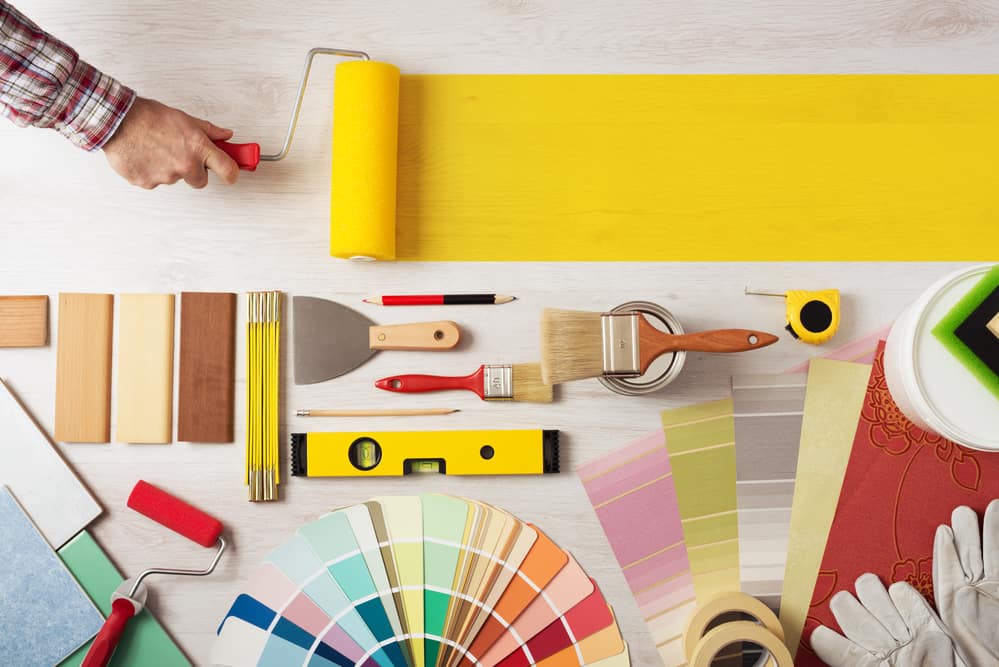Pro Painting Tips: A Complete DIY House Painting Guide For 2025

I’ve been a house painter in Calgary for over 25 years and some of the most common questions are "Where do I start the painting process? Or “What kind of painting tools do I need? Or “What kind of paint should I buy for interior or exterior painting” Or “How long should I wait to apply the 2nd coat of house paint?”
How To Paint My House?
Spring is arriving soon and you may want to take on some DIY painting projects for your home’s interior or exterior.
The first thing to do is decide on a paint brand and the sheen of the paint; be it flat, eggshell, satin, semi-gloss or gloss. The higher sheen's are more washable and the lower sheen paints will show the imperfections less. I would recommend Benjamin Moore or Dulux Paints. They will generally have low cost, good, better or best paints. To be safe, stick with the mid range or ‘better’ paint lines.
Exterior Paints: You don’t want an inexpensive paint to protect your home, especially in Calgary’s demanding weather conditions. Think of it like a sunscreen. You want the higher quality sunscreens or paints with better UVA protection. This is oversimplified, but acrylic paint is a complex mixture of acrylic resin binder and pigments (color) suspended in water.The better paints will also hold their colors better than cheaper brands.
Interior Paints: Interior paints are not exposed to the elements so durability and ease of application are key factors. Some modern acrylic paints dry so quickly that it can be difficult to get a nice looking finish unless you know what you're doing. A pro tip is to add a latex conditioner to the paint which extends the ‘open” time of the coating. I’d recommend Benjamin Moore's 'Extender' as one of the best paint conditioners. I call it the “magic sauce” for easier brushing and rolling. It also helps the paint to lay down better regardless if you are spraying, brushing or rolling it.
Painting Tools You’ll Need To Paint Your House
- Ladder(s)
- Paint Brush: 2.5” angled vinyl/polyester blend
- Paint Roller:I recommend the Wooster Sherlock rollers
- Paint Roller Sleeves. For interior walls buy the lint-free 15mm
- Paint Roller Pan: Simms makes a nice plastic roller tray
- Paint Roller handle: The best are the Wooster Sherlock which extend to various lengths. Or a broom handle.
- Sandpaper: Buy the anti-clog 120 grit sandpaper.
- Sanding Tools: Hand-sander, pole-sander or sanding sponge
- Masking Tape: I prefer the 1” and 1.5” Frog Tape
- Paint Strainer:Use a 5 gallon or single gallon fabric type of strainer
- Drop Cloths: 12x4 cotton runners or 12’x14’ for rooms.
- Screwdriver: you’ll need a screwdriver to remove wall electrical plates.
- Putty Knife: use a 4” putty knife to apply drywall Spackle or mud.
- Drywall Compound: All-Purpose or fast drying Spackle for repairs.

Next step is applying the paint
After you have prepped the walls or surface and protected the floors (and furniture) with drop cloths, you are now ready to paint!
Tape all the baseboards, door frames and window frames with 1” Frog Tape. Use 1.5” tape on the baseboards if they are higher than 2”. Use a 1” putty knife to flatten the tape after you apply it by hand.
Using a a 2.5” paint brush, cut in (brush) along the taped areas and then cut in the ceiling using an empty paint gallon holding about 2” of paint.
Before rolling, make sure to strain all your paint. Ideally, mix it all together well in a 5 gallon pail. You never want to apply new gallon after new gallon of the same color in case of slight mis-tints.
After waiting about 20-25 minutes for the brush work to dry, it’s time to start rolling the walls. Work from left to right starting from a corner. Load the roller liberally with paint and apply it in a “V” pattern about the width of two rollers. Smooth out and back-roll from top to bottom with light pressure. Next, reload your roller and repeat step #1. Roll tight to the taped areas like windows, door frames and baseboards.
Wait about 3-4 hours and apply the 2nd coat of paint exactly like you did before.
When finished, remove all the masking tape while the paint is still wet.
Put all the switch and receptacle plates back on after it has dried.
Done!
